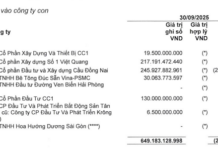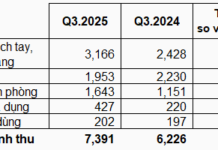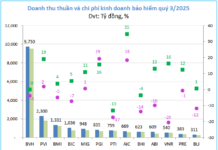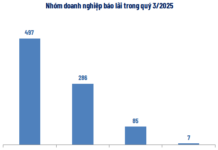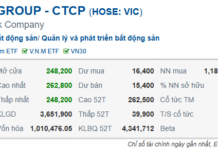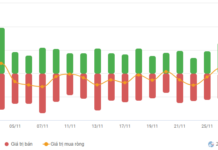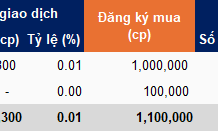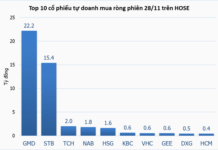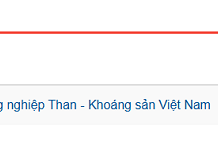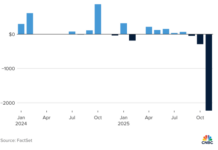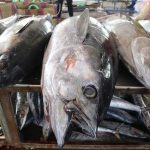According to the Vietnam Association of Seafood Exporters and Producers (VASEP), seafood exports in the first seven months of 2024 reached approximately $2.1 billion, a 6% increase compared to the same period last year.
Vietnamese seafood products are exported to 129 markets, with the top three destinations being Japan, the United States, and South Korea. Specifically, seafood exports to Japan reached $444 million, a 4% decrease; exports to the United States reached $300 million, a 14% increase; and exports to South Korea reached $207 million, a 12% increase compared to the previous year.
TUNA EXPORTS FACE CHALLENGES DUE TO NEW REGULATIONS
VASEP reported that tuna remains the top exported seafood item from Vietnam in terms of value. In the first seven months of 2024, tuna exports to the United States and the EU saw significant growth, with increases of 22% and 36%, respectively. Additionally, Vietnam’s tuna exports to markets such as Israel, Russia, and South Korea also performed well.
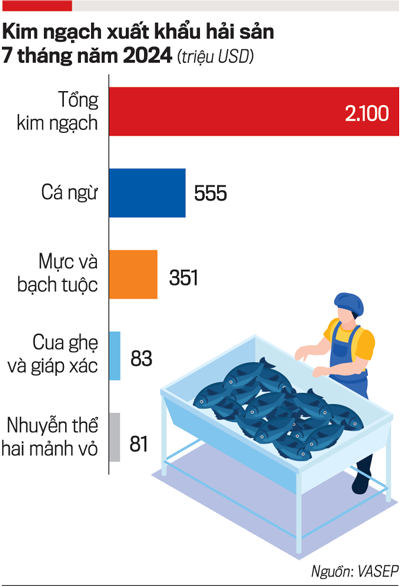
In the EU market, canned tuna is the main product, reaching $62 million, accounting for nearly 49% of the tuna export turnover to this market. Germany, Poland, the Netherlands, Italy, Slovenia, and Denmark are the six largest tuna-importing countries in the EU bloc.
Poland and Denmark are two countries that are increasing their imports of canned tuna from Vietnam. On the other hand, the Netherlands has reduced its imports of this product. The reason for this is that after the shipping costs increased, EU countries tended to reduce the import of tuna through the transshipment ports of the Netherlands and increase direct imports to reduce costs.
However, tuna exports are currently facing challenges in the fishing stage due to Decree 37/2024/ND-CP (effective from May 19, 2024), which stipulates the minimum allowable catch size for yellowfin tuna at 0.5 meters in length.
According to VASEP, tuna processing and exporting companies are currently unable to purchase raw materials that comply with the new regulations. Some tuna companies have completely stopped purchasing domestically caught yellowfin tuna from fishermen as the catch does not meet the required size of 0.5 meters or above. Most fishing ports have also stopped issuing certificates of origin (S/C) for yellowfin tuna batches due to the smaller size of the caught fish compared to the Decree 37 regulations.
“Although the regulation is based on scientific research and contributes to the protection of aquatic resources, it is causing difficulties for many tuna processing and exporting companies in terms of raw material sourcing, and there is a risk of losing major markets,” warned Vu Duyen Hai, Head of the Fisheries Exploitation Department of the Directorate of Fisheries. He also suggested that adjustments should be made as soon as possible.
Currently, companies do not have enough supply of yellowfin tuna (the main raw material for the canned tuna industry) of pure Vietnamese origin for production and export. Therefore, it is expected that tuna exports will struggle to maintain growth in the coming months. As a result, it will be challenging for the tuna industry to regain the $1 billion export milestone set for 2024.
SOUTH KOREA INCREASES IMPORTS OF SQUID AND OCTOPUS
In the first seven months of 2024, squid and octopus were the second-largest exported seafood products in terms of value, reaching approximately $351 million, equivalent to the same period in 2023. South Korea was the largest consumer of Vietnamese squid and octopus, with an import turnover of $140 million, accounting for over 40% of the total export value of these items, a 13% increase compared to the previous year.
In this group, octopus was the main export product of Vietnam to South Korea, accounting for 71.9%, while squid accounted for 28.1%. South Korea mainly imports frozen octopus, frozen cut octopus, cleaned whole frozen octopus, dried skinned squid, and frozen squid balls from Vietnam…
According to VASEP, South Korea is reducing its imports from other suppliers such as Japan, China, and Peru, leading to an increase in imports from Vietnam. The supply of squid and octopus from China to markets such as South Korea has also decreased due to a shortage of raw materials for processing. It is expected that Vietnam’s exports of squid and octopus to South Korea will continue to grow in the remaining months of 2024.
Along with the main exported products of tuna, squid, and octopus, in the first seven months of 2024, exports of crab and other crustaceans reached $83 million, and exports of bivalve mollusks reached $81 million. Other exported seafood items include marine fish, with many items showing strong export growth, such as barramundi with a 27% increase to over $42 million, and threadfin bream with a 14% increase to over $34 million…
Currently, the supply of raw materials for seafood processing and export in Vietnam relies on three main sources: capture fisheries, marine aquaculture, and imports. According to the Directorate of Fisheries, in 2023, the total marine aquaculture production reached 789,800 tons, a 10.1% increase compared to 2022, including: marine fish 46,000 tons; lobster 3,800 tons; mollusks 440,000 tons; and other seafood 300,000 tons.
The marine aquaculture harvest is expected to reach over 900,000 tons in 2024. However, the variety of marine-cultured species is still limited, mainly consisting of grouper, barramundi, lobster, bivalve mollusks, etc. Many other seafood items that are currently in high demand for export, such as tuna, octopus, mackerel, threadfin bream, hoki, and redfish, are not yet cultured, so most of the raw materials still depend on capture fisheries.
DIFFICULTIES IN REDUCING CAPTURE FISHERIES PRODUCTION
According to the Directorate of Fisheries, there are currently 85,980 fishing vessels in Vietnam, including 39,867 vessels with a length of 6-12 meters; 16,561 vessels with a length of 12-15 meters; 27,022 vessels with a length of 15-24 meters; and 2,530 vessels longer than 24 meters.
Recently, the Government Office issued Notification No. 371/TB-VPCP dated August 10, 2024, on the conclusions of Deputy Prime Minister Tran Luu Quang regarding solutions to overcome limitations in the vessel monitoring system (VMS). Accordingly, to achieve the goal of removing the “yellow card” warning from the European Commission (EC) in 2024, it is necessary to focus on completing and effectively operating the VMS system from the central to local levels…
https://postenp.phaha.vn/chi-tiet-toa-soan/tap-chi-kinh-te-viet-nam
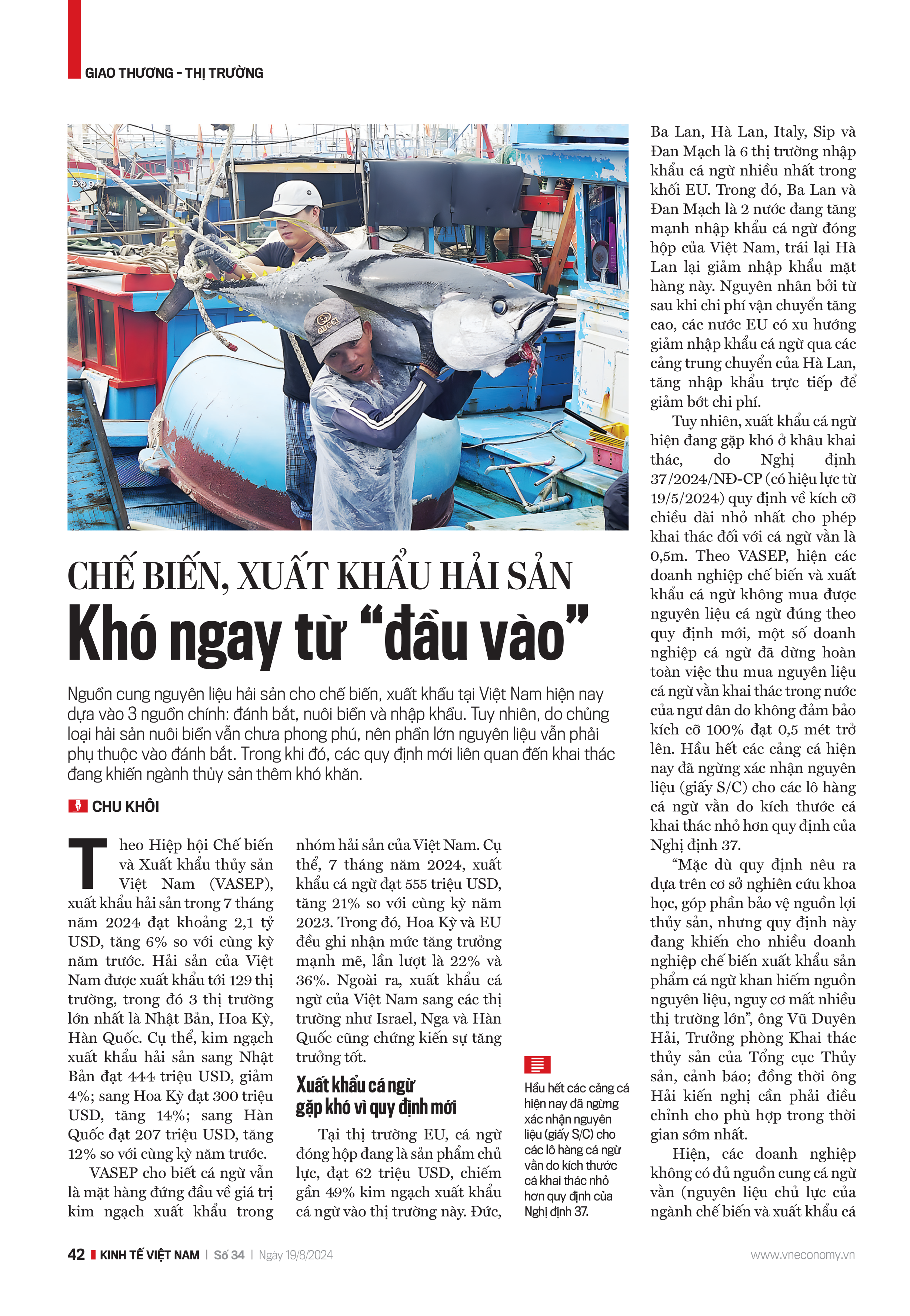
Vietnamese Treasure: Surprising High Demand for a Vietnamese Product in Italy: Europe’s Import Increases 300 Times
Italy has shown a tremendous preference for this product from Vietnam, with an increase of over 300% in the month of January.











